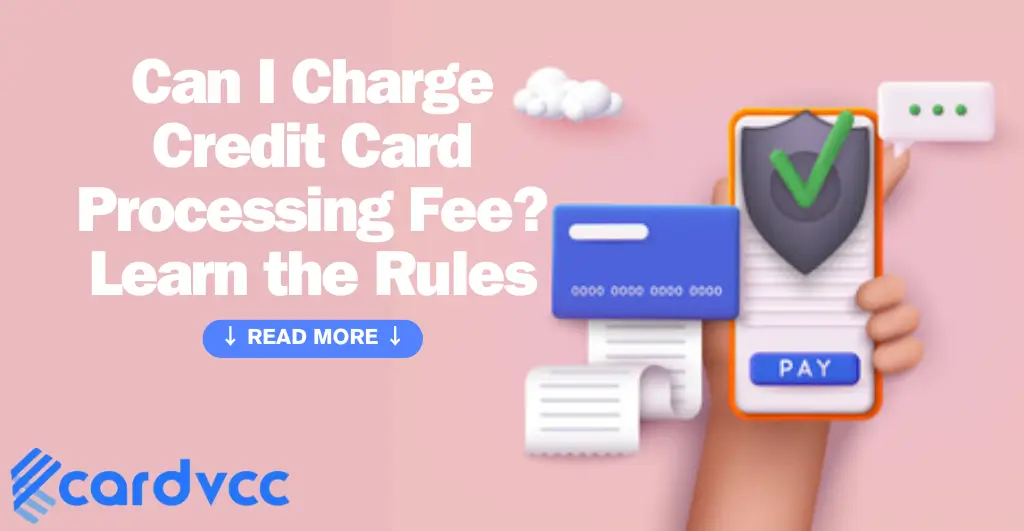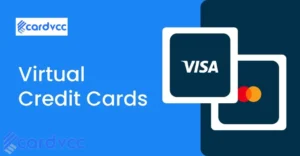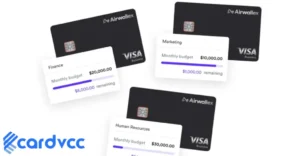Yes, you can charge a credit card processing fee, but it varies by state and card network rules. Always disclose this fee to customers upfront.

Charging a credit card processing fee helps businesses offset transaction costs. Many states allow businesses to pass on these fees to customers, but some have restrictions. It’s crucial to check local laws and card network guidelines before implementing such fees.
Transparency with customers is essential to maintain trust and compliance. Informing customers about the fees at the point of sale or on invoices can prevent misunderstandings. Proper disclosure ensures that customers are aware of the additional costs associated with using a credit card. This practice can help businesses manage expenses more effectively.
Introduction To Credit Card Processing Fees
Understanding credit card processing fees is essential for businesses. These fees can impact your bottom line. This section will give you a clear picture of these fees.
What They Are
Credit card processing fees are charges that merchants pay. These fees apply when a customer uses a credit card. The fees cover the costs of handling the transaction.
Key components of credit card processing fees include:
- Interchange Fees: Paid to card-issuing banks.
- Assessment Fees: Paid to credit card networks.
- Payment Processor Fees: Paid to companies that process transactions.
Why They Exist
Credit card processing fees exist to cover various costs. These costs include fraud prevention, technology, and service. Card-issuing banks need to protect against fraud.
Credit card networks also need to maintain their systems. Payment processors require fees to handle transaction logistics.
| Fee Type | Description |
|---|---|
| Interchange Fees | Paid to card-issuing banks for transaction approval. |
| Assessment Fees | Paid to credit card networks for using their services. |
| Payment Processor Fees | Paid to companies that handle the transaction process. |
Legal Aspects
Understanding the legal aspects of charging credit card processing fees is crucial. These laws and rules ensure transparency and fairness. Knowing them can help you stay compliant and avoid penalties.
Regulations
Businesses must follow specific regulations when adding credit card processing fees. The Consumer Financial Protection Bureau (CFPB) oversees these rules. Merchants must disclose fees clearly before a purchase. This transparency helps customers make informed decisions.
Credit card companies also have their own rules. For example, Visa and MasterCard have guidelines on surcharges. Violating these rules can result in fines. Always read and understand the terms of your merchant agreement.
State-specific Laws
Certain states have unique state-specific laws about credit card processing fees. These laws vary widely. Some states, like California and New York, have stricter regulations.
| State | Legal Status |
|---|---|
| California | Prohibits surcharges on credit card transactions. |
| New York | Allows surcharges with clear disclosure. |
| Texas | Prohibits credit card surcharges. |
| Florida | Allows surcharges with restrictions. |
Always check local laws before adding fees. Violating state laws can lead to legal trouble. Consult a legal expert to ensure compliance.
Business Considerations
Charging a credit card processing fee can impact your business in many ways. This decision requires careful thought. It affects costs, customer experience, and competitiveness. Here, we explore the pros and cons, and customer reactions.
Pros And Cons
| Pros | Cons |
|---|---|
| Reduces expenses: Offsets the cost of credit card fees.Increases profit margin: Keeps more of your earnings.Encourages cash payments: Some customers prefer to avoid extra fees. | Customer dissatisfaction: Some may dislike extra charges.Competitive disadvantage: Competitors may not charge these fees.Complexity: Requires clear communication and accurate calculation. |
Customer Reactions
Customer reactions can vary widely. Some may understand and accept the fee. Others may feel annoyed or cheated.
Clear communication is key. Explain why you charge a processing fee. Highlight how it helps your business. Transparency builds trust.
Consider alternatives. Offer discounts for cash payments. Reward loyal customers with fee waivers. Tailor your approach based on your customer base.
Implementing A Processing Fee
Charging a credit card processing fee can help offset transaction costs. It is important to follow the correct steps to stay within legal boundaries.
Steps To Follow
Follow these steps to implement a processing fee:
- Check Legal Requirements: Ensure your state allows charging a processing fee. Some states prohibit this practice.
- Notify Customers: Inform customers about the processing fee before they make a purchase. This can be done via clear signs or notifications on your website.
- Update Payment Systems: Configure your payment system to add the processing fee automatically.
- Review Terms with Payment Processor: Some payment processors have specific rules about charging fees. Make sure you comply with their policies.
Common Mistakes
Avoid these common mistakes when implementing a processing fee:
- Not Informing Customers: Always tell customers about the fee upfront. Failing to do so can lead to unhappy customers and potential legal issues.
- Charging Excessive Fees: Keep fees reasonable. Charging too much can drive customers away.
- Ignoring State Laws: Different states have different rules. Make sure you comply with local regulations.
- Incorrect Fee Calculation: Ensure your system calculates the fee correctly. Incorrect fees can cause disputes.
By following these steps and avoiding common mistakes, you can successfully implement a credit card processing fee.
Communicating With Customers
Communicating with customers about credit card processing fees is crucial. Clear communication ensures that customers trust your business. It also helps in avoiding misunderstandings and complaints.
Transparency
Transparency is key when discussing credit card processing fees. Customers appreciate honesty. Make sure to display any fees prominently on your website and at the point of sale.
- Website: Mention the fees on the pricing or FAQ page.
- Receipts: List the fees on printed and digital receipts.
Use simple language that everyone can understand. Avoid jargon or complicated terms. This helps in making sure everyone is on the same page.
Handling Complaints
It’s essential to handle complaints about fees with care. Customers may not be happy about extra charges. Having a plan to address their concerns can make a big difference.
- Listen to the customer’s complaint attentively.
- Acknowledge their feelings and show empathy.
- Explain why the fee is necessary using simple terms.
- Offer solutions or alternatives if possible.
Always remain polite and professional. A good attitude can turn a negative experience into a positive one. This will help in retaining customer loyalty.

Can virtual cards protect against online scams?
Online scams are a big problem today. Many people lose money to online thieves. Virtual cards can help stop this. But what are virtual cards?
What Are Virtual Cards?
Virtual cards are not physical cards. They are digital. You use them for online shopping. They work like regular credit or debit cards.
How Do Virtual Cards Work?
Virtual cards have a unique number. This number is different from your real card number. You can use this number to buy things online.
- They have an expiration date.
- They have a CVV code.
- You can set spending limits.
Benefits of a Virtual Payment Card
Using a virtual card has many benefits. These benefits can help protect you from online scams.
1. Enhanced Security
Virtual cards use a different number from your real card. This keeps your real card number safe. If a thief gets your virtual card number, they can’t use it for long.
2. Spending Limits
You can set spending limits on virtual cards. This helps you control how much you spend. It also stops thieves from spending a lot of your money.
3. Easy To Cancel
Virtual cards are easy to cancel. If you think someone stole your virtual card number, you can cancel it quickly. This stops thieves from using your money.
4. One-time Use
Some virtual cards are for one-time use. This means you can use them once and then throw them away. Thieves can’t reuse them.
5. Privacy Protection
Virtual cards can help protect your privacy. They don’t show your real card number. This keeps your personal information safe.
How to Get a Virtual Card
You can get a virtual card from many places. One good place is Cardvcc. You can join Cardvcc and create virtual cards instantly.
Steps To Get A Virtual Card From Cardvcc
- Visit the Cardvcc website.
- Create an account.
- Follow the steps to create a virtual card.
- Start using your virtual card for online shopping.
Real-Life Examples
Many people use virtual cards. Here are some stories from real people.
Jane’s Story
Jane loves online shopping. She used to worry about online scams. Now, she uses virtual cards. She feels safe and happy.
Mike’s Story
Mike had his credit card number stolen. He lost a lot of money. Now, he uses virtual cards. He hasn’t had any problems since.
Join Cardvcc & Instantly Create Virtual Credit Cards
Cardvcc makes it easy to create virtual cards. You can join and start using them right away. Protect yourself from online scams today!
Alternatives To Charging Fees
Charging a credit card processing fee can upset customers. There are better ways to manage these costs. Here are two effective alternatives.
Absorbing Costs
Many businesses decide to absorb the credit card processing fees. This can lead to happier customers. They won’t see extra charges on their bills. Absorbing the costs can also help with customer loyalty. Happy customers often return for more purchases.
To absorb these costs, you can adjust your pricing. Slightly increase the prices of your products or services. This way, the fees are covered without adding extra charges.
Offering Discounts
Another method is to offer discounts for cash payments. This can encourage customers to pay with cash, helping you avoid processing fees.
For example:
- Offer a 5% discount on cash payments.
- Provide loyalty points for cash transactions.
- Give special promotions for non-credit card payments.
Offering discounts can be a win-win situation. Customers save money, and you avoid processing fees.
Case Studies
Exploring real-world examples can help understand the impact of charging credit card processing fees. In this section, we delve into specific case studies. These examples show how businesses have implemented this strategy successfully.
Successful Implementations
Several businesses have successfully implemented credit card processing fees. Here are a few noteworthy examples:
| Business | Strategy | Outcome |
|---|---|---|
| Local Cafe | Added a 2% fee | Increased revenue by 5% |
| Online Store | Implemented a 3% surcharge | Reduced processing costs by 3% |
| Service Provider | Introduced a 1.5% fee | Improved profit margins |
Lessons Learned
These case studies provide valuable lessons:
- Clear Communication: Inform customers about the fees upfront.
- Transparency: Display fees clearly during checkout.
- Customer Education: Explain why the fee is necessary.
Businesses found that being transparent builds trust. Customers appreciate knowing about fees in advance. This approach minimizes negative reactions.
Another key lesson is to keep the fees reasonable. Excessive charges can drive customers away. A balanced approach ensures customer retention.
Finally, businesses noted the importance of tracking outcomes. Regularly review the impact on revenue and customer satisfaction. Adjust strategies based on these insights.
Future Trends
Understanding the future trends in credit card processing fees is vital. This helps businesses stay ahead and make informed decisions. Here are some key trends to watch out for.
Changes In Regulations
Governments are constantly updating regulations. These regulations affect credit card processing fees. New rules may lower or increase these fees. Businesses must stay updated. This ensures they comply and avoid penalties.
Technological Advances
Technology is evolving quickly. New tools are emerging. These tools make processing payments easier. They may also reduce fees. For example, blockchain technology is promising. It can lower transaction costs significantly.
Let’s look at some key technological advances:
- Blockchain: Reduces transaction costs and increases transparency.
- AI and Machine Learning: Helps detect fraud and improve security.
- Mobile Payments: Simplifies transactions and reduces reliance on physical cards.
These technologies can change the landscape of credit card processing. Staying updated can help businesses save money.

Frequently Asked Questions
Can Businesses Charge A Credit Card Processing Fee?
Yes, businesses can charge a credit card processing fee. However, it must comply with state laws and card network regulations.
Is It Legal To Charge A Credit Card Fee?
It is legal to charge a credit card fee in most states. Always check local regulations to ensure compliance.
How Much Can You Charge For Credit Card Fees?
The fee charged must not exceed the cost of acceptance. Typically, this is around 2-4% of the transaction amount.
Do I Need To Inform Customers About Credit Card Fees?
Yes, you must disclose any credit card fees. Inform customers before they complete the transaction.
Conclusion
Charging a credit card processing fee can boost your business revenue. Ensure compliance with legal guidelines and transparency. Communicate these fees to customers. Implementing this strategy could help offset transaction costs. Always prioritize customer satisfaction and trust. Evaluate if this approach aligns with your business goals and customer expectations.







